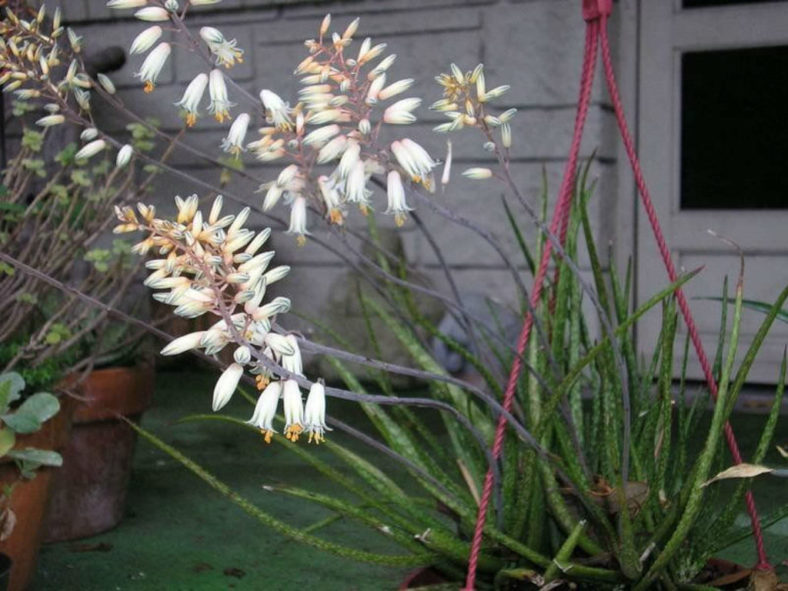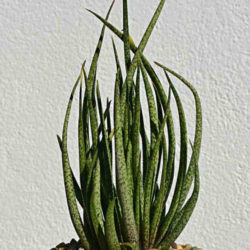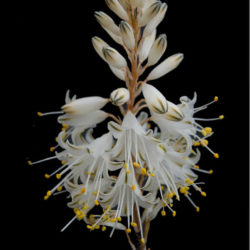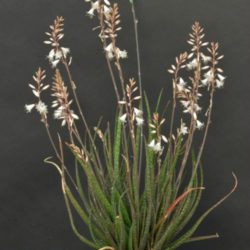Scientific Name
Aloe albiflora Guillaumin
Synonym(s)
Guillauminia albiflora
Scientific Classification
Family: Asphodelaceae
Subfamily: Asphodeloideae
Genus: Aloe
Description
Aloe albiflora is a small, suckering succulent that forms a clump of rosettes of narrow, grey-green, white-spotted leaves with a rough texture and narrow, cartilaginous margins with tiny, whitish teeth. The leaves are linear, tapering to a point, and can grow up to 6 inches (15 cm) long and 0.6 inches (1.5 cm) wide. Each rosette has up to 10 leaves.
The flowers are white with slightly reflexed petals with a green central stripe. They are bell-shaped, up to 0.4 inches (1 cm) long, and appear on unbranched inflorescences reaching up to 18 inches (45 cm) in height, almost year-round but mainly in late fall.
When not in flower, this species can be mistaken for Aloe bellatula.
Origin
Aloe albiflora is native to southern Madagascar. It was first collected east of the rural commune Tsivory in the Anosy region by the French botanist André Guillaumin (1885-1974). It is now widely cultivated but has never been found again at the type locality.

Hardiness
USDA hardiness zone 9b to 11b: from 25 °F (−3.9 °C) to 50 °F (+10 °C).
How to Grow and Care
Aloes are very forgiving plants. However, as with all succulents, Aloe must never be allowed to sit in stagnant water, and the plant should be carefully monitored to watch for signs of overwatering.
Aloes are not particularly fast-growing and will only rarely need repotting. Repot plants in the spring that are tipping over their pots or have ceased growing. Use a fast-draining potting mix with one-third sand or pebbles. When repotting a larger plant, dividing the root ball carefully is possible. Some kinds of Aloe will send off off-sets that can be potted independently.
It needs intense, bright light. They can withstand full summer sun once acclimated. In the winter, provide bright light. It prefers warmer temperatures of 70 to 80 °F (21 to 27 °C) but will survive down to 40 °F (4.5 °C). Feed with a cactus fertilizer in the summer only. Suspend feeding in the winter as the plant goes dormant.
See more at How to Grow and Care for Aloe.
Links
- Back to genus Aloe
- Succupedia: Browse succulents by Scientific Name, Common Name, Genus, Family, USDA Hardiness Zone, Origin, or cacti by Genus
Photo Gallery
Click on a photo to see a larger version.


